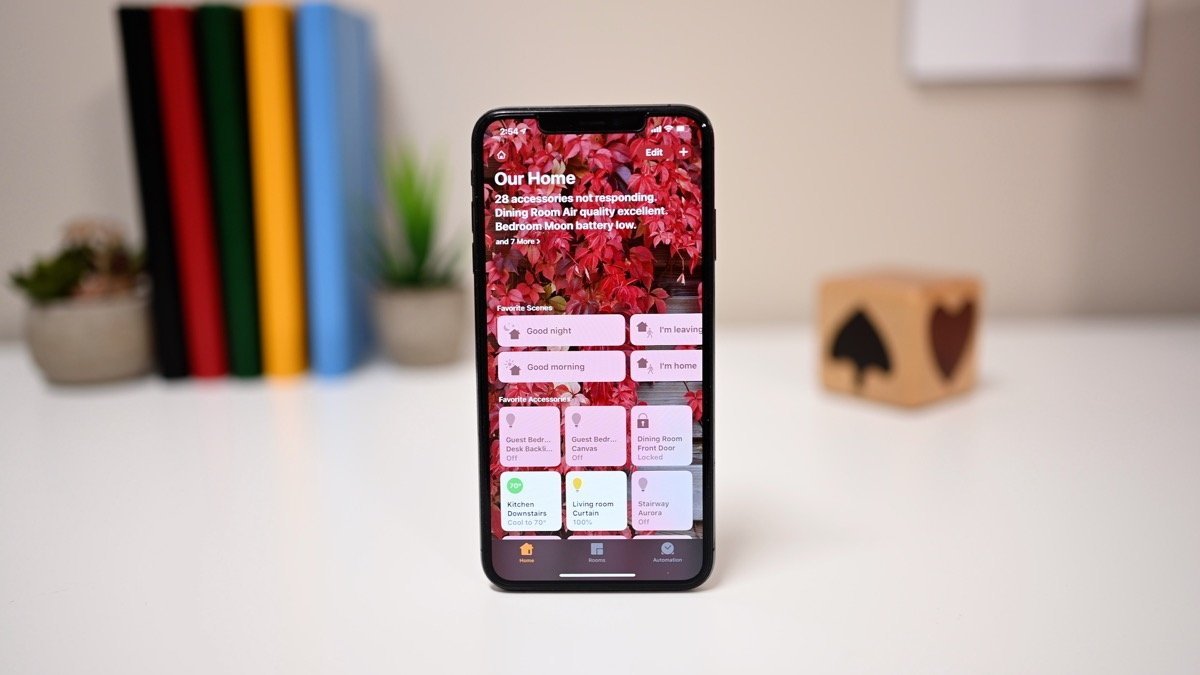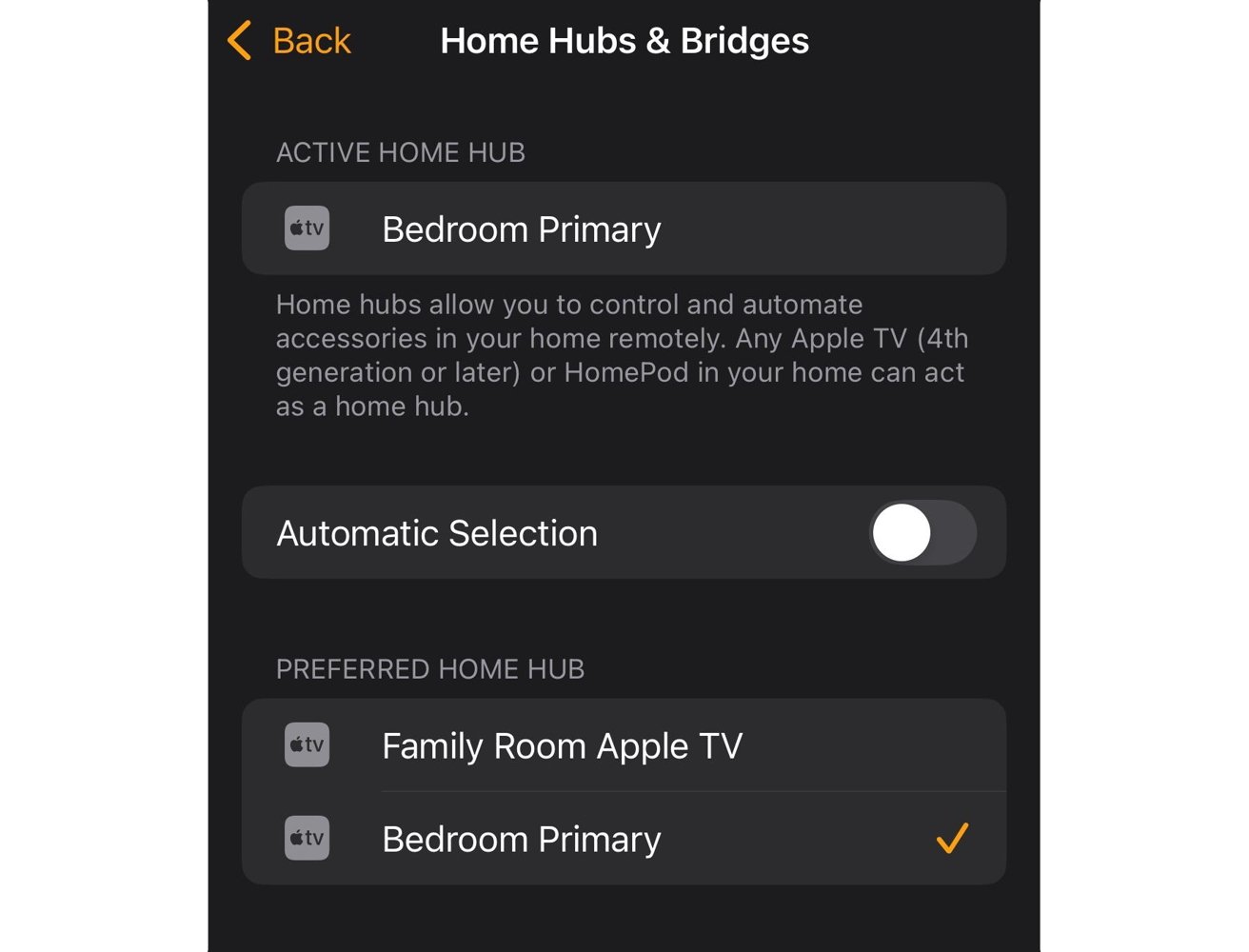HomeKit now lets you manually set what device is your Home Hub in iOS 18
HomeKit is giving users more choice about what controls the smart home network in iOS 18, by selecting what device acts as the active Home Hub.

HomeKit's Home app on iOS
HomeKit prefers to have a Home Hub, a device designated as the main point of contact on the network for all other hardware. A home could have multiple devices that can act as the Home Hub, but you couldn't previously designate one as the primary device for the task.
In practice, this meant that the assignment rotated, sometimes to a device on the periphery of your network.
Though Apple mentioned multiple changes to HomeKit during its keynote, the HomeKit subreddit on Reddit spotted an unannounced change in the Home app.

The new Preferred Home Hub option in the Home app [Reddit]
Users can now select a "Preferred Home Hub" in the Home app. A user can specify which potential Home Hub is the primary one from the list of potential devices.
If the preferred option is disconnected or unavailable, HomeKit will switch to one of the others until the selected device becomes available again.
For users, the option to select a Preferred Home Hub can be useful. For example, they can set newer devices as the designated Home Hub instead of older hardware.
If there is a slow connection to a Home Hub device, the option also ensures that device will only be used as a backup.
The change is appearing in the iOS 18 Home app, but it does require that beta software is installed on the HomePod and Apple TV units for it to work.
Read on AppleInsider

Comments
I thought I had read the issue of HomeKit devices "being on a different wifi network" (ie: I have both 2.4Ghz and 5Ghz networks from one router) was going to be addressed in this update. That would be so nice! I purposely removed and re-installed every AppleTV and HomePod last year with my iPhone on the 2.4Ghz network but it seems, due to all these devices being logged into my iCloud and sharing wifi access point passwords, I always have one or two devices that insist on connecting to my 5Ghz network. This results in errors in the Home app showing a mis-matched wifi network.
First to Kdupuis77, 2.4 Ghz and 5 Ghz are not 2 different networks, these are radio frequency channels. The issue has nothing to do with mismatched wifi networks, instead it has a lot to do with the devices radio capabilities and your WiFi routers saturation. It takes more bandwidth and power for a device with obstructions between it and the Wifi router than it does for one that is 20’ away with no obstructions. This is how a closer Homekit hub can end up as the active hub.
2.4Ghz offers a longer range of connectivity (150’ indoors up to 300’ outside) than 5Ghz (100’ indoors 200’ outdoors) so devices can be further away from the router and still connect. 5Ghz offers more bandwidth but at the cost of having a shorter distance.
When routers use the same SSID for both channels it is to allow devices that can do automatic channel switching utilize both channels. This can be helpful for some devices. On the other hand, there are a ton of devices that not only do not work on 5Ghz, they will not connect to WiFi at all if channel switching is enabled on the router. You can in some cases trick them into joining the first time by temporarily turning off the 5GHz.
It is not as Elijahg has suggested a “bad idea” to have separate SSID’s assigned to each channel. The absolute only bad thing that could come from it is that devices that can use both might loose connectivity if they were to move outside of the 5Ghz range, which depending on the device’s radio power could be anywhere from 100’ to 200’.
Ultimately it comes down to you and your needs. If all your devices can switch its not a bad idea to have it enabled. But if your household is like mine with a kid that’s a hardcore gamer and we stream 100% of our TV, I prefer the 5GHz channel be reserved for devices that support those things while all of my IoT devices are restricted to the 2.4 Ghz channel if they support it – I do have one camera that only supports 5Ghz.